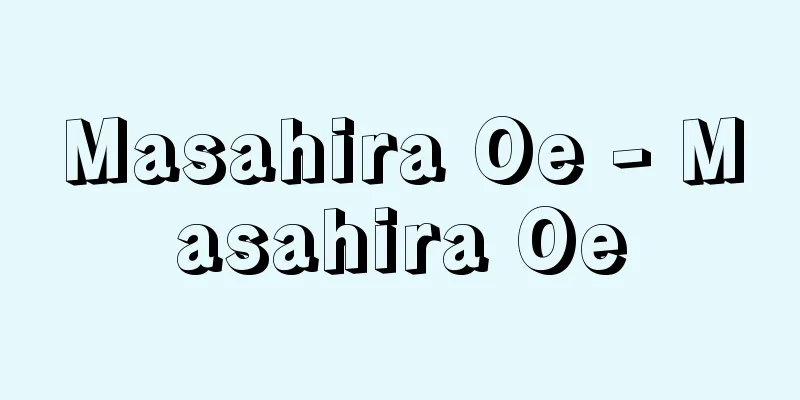Yasunobu Miyoshi

|
Year of death: 8/9/1221 (8/27/1221) Year of birth: 1140 A bureaucrat in the Kamakura Shogunate. His posthumous Buddhist name was Zenshin. As the first steward of the Monjusho, he played a major role in the development of the judicial and administrative structures of the Kamakura Shogunate. As a senior vassal of three generations of Genji Shoguns, he played an important role in the judicial and administrative aspects of the Shogunate, and built the foundations of the Ota, Machino, and Yano clans of the Miyoshi clan that followed. He was born into the Miyoshi family, who inherited the position of historian in the Daijokan in Kyoto, but as his mother was the sister of Minamoto no Yoritomo's wet nurse, he informed Yoritomo, who was exiled to Izu, of the situation in Kyoto and helped him raise an army in 1180 (Jisho 4). After the army was raised, he continued to assist Yoritomo in Kyoto by writing drafts of prayers to be submitted to Ise Shrine, but when the Shogunate was established, Yoritomo invited him to come to Kamakura on April 14, 1184 (Genryaku 1), and asked him to assist in the Shogunate's government affairs. When the Monjusho was established in the shogunate on October 20th, he became its steward and worked to improve the judicial system. Afterwards, due to his knowledge of the customs and performing arts of Kyoto, he not only served as an advisor to Yoritomo in relation to the Imperial Court along with Oe Hiromoto, but also managed Kamakura during the Oshu War in 1189 and when Yoritomo went to Kyoto the following year, and when the Monjusho was moved to Yasunobu's house, he also took on the function of the shogunate's library. Even after Yoritomo's death, he continued to play the role of a senior vassal of the shogunate, and when he was specifically invited to give his opinion during the Jokyu War (1221), he spoke in favor of war. Immediately after the shogunate's victory, he resigned from his position and handed it over to his son Yasutoshi before passing away. From then on, the position of steward at the Monjusho was fixed to Yasunobu's lineage. <References> Gomi Fumihiko, "Azuma Kagami no Hoho" (Fumihiko Gomi) Source: Asahi Japanese Historical Biography: Asahi Shimbun Publications Inc. About Asahi Japanese Historical Biography |
|
没年:承久3.8.9(1221.8.27) 生年:保延6(1140) 鎌倉幕府の吏僚。法名は善信。初代の問注所執事として鎌倉幕府の裁判,行政機構の整備に大きな役割を果たした。源氏3代の将軍の重臣として幕府の裁判,行政に重きをなし,以後の三善氏の太田・町野・矢野各家の基礎を築く。京の太政官の史の職を継承する三善の家に生まれたが,母が源頼朝の乳母の妹であったことから,伊豆に流されていた頼朝に京の情勢を知らせて治承4(1180)年のその挙兵を助けた。挙兵ののちも京にあって伊勢神宮に納める願文の草案を記すなど頼朝を助けていたが,幕府の成立とともに頼朝に招かれて元暦1(1184)年4月14日に鎌倉に下り,幕府の政務の補佐を依頼された。10月20日に問注所が幕府に設置されると,その執事となって裁判制度の整備を進めた。以後,京の故実や芸能に詳しいことから,大江広元と共に朝廷との関係で頼朝の顧問役を果たしたばかりか,文治5(1189)年の奥州合戦や翌年の頼朝の上洛では鎌倉の留守を沙汰し,問注所が康信の家に移されると,幕府の文庫の機能も担わされた。頼朝の死後も幕府の重臣としての役割を果たして,承久の乱(1221)では特に招かれて意見を求められると,主戦論を述べている。幕府勝利の直後に職を辞し,息子の康俊に譲って世を去った。以後,問注所の執事は康信の流れに固定されていった。<参考文献>五味文彦『吾妻鏡の方法』 (五味文彦) 出典 朝日日本歴史人物事典:(株)朝日新聞出版朝日日本歴史人物事典について 情報 |
Recommend
Joan, B. (English spelling) JoanB
...After that, various dance notation methods wer...
Intercalated heterochromatin - Kaizai Heterokuromachin
… Heterochromatin is usually found near the centr...
Antieta, J.de - Antieta
...The most important song composer of this perio...
Ashida
A district of Tateshina Town, Kitasaku County, Na...
Kamishima
An island in the northeastern part of the Amakusa ...
Sakunoshin Motoda
Year of death: April 16, 1928 Year of birth: Bunky...
Long poem - Chouka
A type of waka poem. It is believed to have been ...
kudüm (English spelling) kudum
...It is the ancestor of the Western timpani. In ...
Nanto Seven Great Temples - Nanto Seven Great Temples
The seven great temples in and around Heijo-kyo: ...
Music series (English spelling) musique sérielle [France]
A compositional technique that was widely used in ...
Big Lion - Oojishi
…(1) A kogaki (a variation of the Noh play) from ...
Purple loosestrife
...Distributed throughout Japan and Korea. Purple...
Picture of the Appearance of the Golden Coffin of Shaka
A variation of the Life of Buddha. Based on the Ma...
Blushing - Hoobeni
Blush for your cheeks. Blush. Blush color. Source:...
Erectus larva - Erectus larva
…A crustacean of the Stomatopoda family (illustra...

![Obi [river] - Obi](/upload/images/67cb21919902b.webp)







